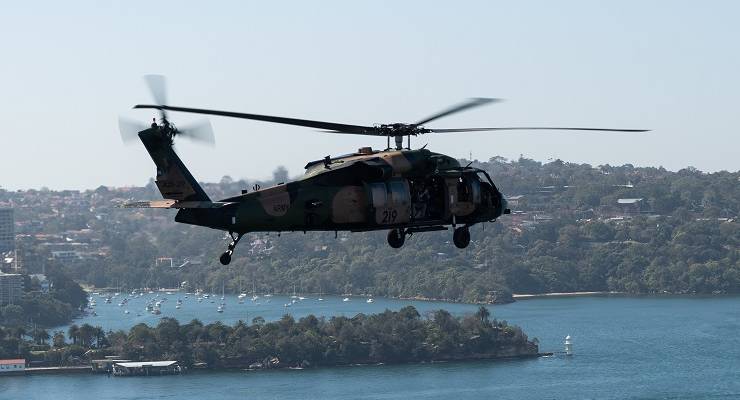
Show me where it hurts
South Australia has been quite the little achiever in the whole stifling the spread of COVID thing thanks to early border closures, swift lockdowns and, perhaps most importantly, a public health system which immediately swung into action with testing and reporting.
And now the state government is celebrating its joyfully low number of 440 cases and four deaths by… um, pressuring still-supposedly “essential” healthcare workers to quit in a round of money-saving redundancies.
The government has pointed out that the redundancies are voluntary — at the moment — but that the target is reportedly currently undersold by 377 packages, so “voluntary” might be a somewhat flexible term in coming months.
Australian Nursing and Midwifery Federation (SA Branch) CEO Elizabeth Dabars has praised the state government’s plan as being “unnecessary and reckless” in a statement, adding “While we are still in code brown [necessitating additional hospital capacity], I don’t know how they can justify getting rid of nurses”.
And sure, an active global pandemic does seem like an odd time to pay off people to quit frontline health services, but it’s important to take a moment to really appreciate the sunny optimism of Steven Marshall’s state government.
Not only are they banking on that whole “second wave of the virus” thing not happening even as we relax restrictions and move into the traditional flu season, but they’re figuring that a bunch of people in government jobs are going to choose the first recession in 29 years as the ideal time to make a career change.
They’re nothing if not adorably hopeful.
Attack! Pew pew pew! BOOM!
Of course, given the vast amounts of money our governments have been forced to spend to combat the shutting-down of entire swathes of the economy, we know that it’s vital to ensure that every dollar is spent wisely and responsibly.
For example, the Morrison government has made very clear that workers in some sections of the economy — universities, for example, and the creative industries — are just going to have to fend for themselves because we have to draw the spending line somewhere.
And also there are heaps of cool pew-pew army toys the government wants.
Callum Foote went over the numbers and found that since 2018 the government’s spending on defence has been greater than the spending on all other government departments combined. Even for 2020, the $8 billion the government has spent to date across all other areas — including coronavirus response — is dwarfed by the $12 billion spent on defence, although it’s unclear at this stage whether the plan is to bomb the virus or the recession.
Mind you, in 2018 the government’s contracts only came to $27 billion for the nation-running stuff versus a jaw-dropping $85 billion for the military.
And to be honest, that seems a lot to spend in peacetime. I don’t recall Australia declaring war on anyone that year, unless the announcement was buried under the coverage of that unusually large cow.
What’s even weirder is that over a third of the defence spend is on vehicles, especially aircraft. Foote points out that this gives credence to the notion that under the Coalition, “the bulk of defence spending goes towards toys-for-the-big-boys rather than 21st-century defensive gear like drones, cyber-security hardening, chemical and bioweapon defences, etc”.
Still, maybe Morrison is just planning to lift everyone’s spirits by giving every family a helicopter for Xmas. I’m naming mine “Mr Spinny”.
Up, up and away
While various suitors have been gradually dropping out in the battle to buy out Virgin like a dull, aviation-themed series of The Bachelor, few have noticed Qantas’ quiet enquiries into increasing its current 19.9% stake in Queensland’s regional carrier Alliance Airlines into something a bit larger and more majority shareholder-ish.
The Australian Competition and Consumer Commission (ACCC), however, is alert to the move and has announced that it would oppose any such shareholding increase on the grounds that it looks less like the company charmingly returning to its top-end origins and more like a swollen behemoth trying to buy out its only competitor in order to have an unbreakable monopoly on regional passenger routes, including the lucrative market of fly-in-fly-out mine workers.
“We will consider enforcement action if there is evidence that the Qantas shareholding is compromising Alliance’s ability to be a strong competitor to Qantas, now and in the future,” ACCC chair Rod Sims told InQueensland.
But that just underestimates the many, many alternative travel options already available! Heck, as long as a plane ticket is cheaper than an 18 hour Uber from Brisbane to Cloncurry, it’s technically still competitive, right?








Given the political propensity of certain types, apart from toys for the soldier boyz, I’d be interested in knowing what police equipment budgets are like currently and forward projections.
Who can forget NSW top cop Mighty Mouth Skippy salivating over his shiny new water cannon – “It’s how we do business in this state” he ejaculated – to enforce the Rodent’s Ring of Steel for the APEC meeting in Sept 2007, his last hurrah as PM hoping to win his 5th election.
(For the record it was never used, cost millions to keep maintained & mothballed until sold as scrap.)